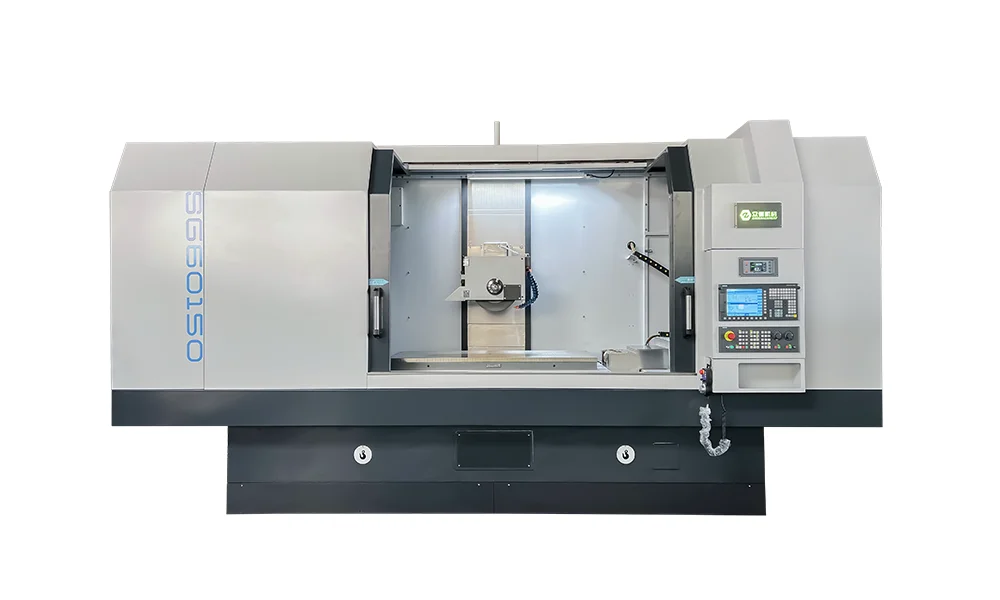- This topic is empty.
-
AuthorPosts
-
2025-07-15 at 6:21 pm #4112
The 3-axis automatic surface grinding machine has become an indispensable tool in modern manufacturing processes, particularly in industries that require high-precision surface finishes and dimensional accuracy. As industries strive for tighter tolerances and higher production efficiency, the role of advanced surface grinding technologies becomes increasingly prominent. In this blog post, as a high performance automatic cnc surface grinder supplier, Nantong Zode will share the industrial applications of 3 axis automatic surface grinding machine for sale.
Technical Overview of 3-Axis Automatic Surface Grinding Machines
Before exploring the applications, it is essential to understand what a 3-axis automatic surface grinding machine entails. These machines operate along three primary axes—X (left-right), Y (front-back), and Z (up-down)—providing controlled motion to both the grinding wheel and the workpiece. The integration of programmable logic controllers (PLCs), human-machine interfaces (HMIs), and in many cases, CNC systems, enables precision automation of grinding cycles.
Key features typically include:
* High-Rigidity Bed and Column Design: Minimizes vibration for consistent grinding accuracy.
* Hydrostatic or Linear Guideways: Ensures smooth, backlash-free movement of all axes.
* Digital Servo Motors: Provide precise feed rate and position control.
* Automatic Wheel Dressing Units: Maintain grinding wheel shape and sharpness without manual intervention.
* Coolant Systems with Filtration: Crucial for temperature control and debris management during operation.
* User-Friendly Interface: Allows for the programming of complex multi-step grinding operations with high repeatability.
These technical features render the 3-axis surface grinder suitable for high-precision finishing of flat or slightly contoured surfaces on metals and non-metallic materials alike.

Automotive Industry
One of the most prominent industrial applications of 3-axis automatic surface grinding machines is in the automotive sector, where tight tolerances and surface smoothness are essential to functional and aesthetic components.
Applications include:
* Cylinder Heads and Engine Blocks: Surface grinding ensures a perfectly flat sealing surface for gaskets to prevent leakage.
* Transmission Components: Gear faces, shafts, and clutch plates require fine surface finishes to reduce friction and wear.
* Brake System Components: Rotors and pads are ground for flatness to ensure proper contact during braking.
Due to the high-volume nature of automotive production, the automation and consistency offered by 3-axis surface grinders improve cycle times and reduce reliance on operator skill, thereby enhancing productivity and quality assurance.
Mold and Die Manufacturing
In mold and die making, surface grinding is crucial for achieving the ultra-smooth finishes needed for high-precision injection molding, stamping, and forming tools.
Typical applications:
* Die Plates and Cavity Inserts: These components demand extremely tight tolerances and smooth finishes for high-quality part ejection and minimal wear.
* Punches and Dies: Require flat and accurate surfaces for proper cutting or forming of sheet metal or plastic.
* Ejector and Guide Plates: Must be ground accurately to ensure smooth mold operation.
The 3-axis configuration is especially valuable here, allowing for automatic step-grinding routines and plunge-grinding operations without repositioning, saving setup time and improving alignment.
Semiconductor and Electronics Manufacturing
In the semiconductor and electronics industries, the need for precise, ultra-flat surfaces is even more pronounced. Devices must be assembled on substrates with minimal deviation in surface profile.
Applications include:
* Photomask Plates and Reticles: Require surface grinding to achieve nanometer-level flatness and surface finish.
* PCB Tooling Plates: Need high planarity to maintain alignment in multi-layer board stacking processes.
* Wafer Grinding: Thinning silicon wafers after dicing or before final packaging stages requires gentle, uniform grinding with strict control over depth.
The programmable Z-axis in a 3-axis surface grinder plays a vital role in depth control and repeatability, especially in delicate grinding operations on brittle materials like silicon and glass.
Tool and Cutter Manufacturing
Precision tooling is the backbone of almost every manufacturing sector. Surface grinding ensures dimensional accuracy and sharpness retention for a wide array of cutting tools and fixtures.
Applications:
* Cutting Tool Blanks: Carbide or HSS blanks are surface-ground before further profiling or coating.
* Jigs and Fixtures: Require precision-ground bases to maintain accuracy during repetitive machining tasks.
* Gauge Blocks and Measuring Tools: Need extremely flat surfaces for dimensional calibration and metrology.
In toolmaking shops, 3-axis surface grinders allow for unattended operation during multi-pass grinding cycles, reducing manual handling errors and maintaining consistent tool geometry.
Medical Device Fabrication
Medical manufacturing demands extremely tight tolerances, biocompatible material processing, and often mirror-like finishes to comply with industry regulations and patient safety.
Examples include:
* Orthopedic Implants (e.g., hip/knee joints): Require flat surfaces for articulation and fitment.
* Surgical Instruments: Grinding ensures precision edges and non-glare finishes.
* Diagnostic Equipment Components: Require accurate housing parts and heat-sensitive component interfaces.
The automation and repeatability of 3-axis grinding ensure minimal operator error and compliance with FDA or ISO 13485 standards, essential for traceability and quality assurance in this industry.
Advantages in Production Environments
Across all these sectors, the benefits of deploying a 3-axis automatic surface grinding machine include:
* Higher Throughput: Automated cycles reduce idle time and increase overall productivity.
* Labor Cost Savings: Fewer operators are needed to oversee multiple machines.
* Improved Precision and Consistency: Elimination of manual control reduces variability.
* Reduced Waste: Higher first-pass yield and fewer rejected parts due to consistent quality.
* Ease of Integration: Modern machines support digital interfacing with MES/ERP systems, facilitating Industry 4.0 practices.
Conclusion
The 3-axis automatic surface grinding machine represents a convergence of mechanical precision, control technology, and automation, making it a cornerstone in a wide range of high-precision industrial applications. Whether it's the high-stakes components of aerospace turbines or the intricate molds used in medical device production, this machine brings unmatched flatness, repeatability, and surface integrity to manufacturing lines.
As industries continue to demand faster, cleaner, and more accurate production methods, the versatility and advanced capabilities of the 3-axis surface grinder will only grow in importance—cementing its place as a key asset in precision manufacturing operations worldwide.
http://www.zodemc.com
Nantong Zode -
AuthorPosts
- You must be logged in to reply to this topic.